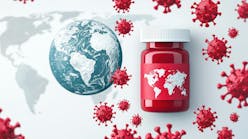A trailblazer in phlebotomy education, Ernst creates a preanalytical path of excellence for others to follow.
Dennis J. Ernst, MT(ASCP)
Professional
Executive Director,
Center for Phlebotomy Education,
Corydon, IN, 1998-present.
Editor-in-Chief, Phlebotomy Today, 2001-present;
Adjunct instructor,
University of Louisville School of Allied Health, 1991-2000.
Education
BA in Biology and Psychology
Albion College, Albion, MI;
St. Luke's Hospital School of Medical Technology,
Saginaw, MI.
Personal
Interests include scenic/nature photography, bird watching, travel, visiting historic cathedrals, writing, and being a good steward of the 13 forested acres my wife and I have been blessed to inhabit.
Healthcare from the heart. My interest in healthcare was inspired by my mother, who worked as a registered nurse. The personal satisfaction that radiated from my mom as she talked about her job resonated with me and became something I wanted to experience. In college, I worked as an EMT and, ultimately, pursued a degree in medical technology. As a bench tech at a small county hospital, I enjoyed the challenge of successfully obtaining high-quality blood samples as painlessly as possible, often under difficult circumstances. Outpatients started requesting that I be the one to draw their blood, and I began to feel that same personal satisfaction that caring for patients gave my mom.
Learning from mistakes. In 1996, I received a phone call that forever changed what I would do within my profession. An attorney representing a patient injured during a routine venipuncture procedure asked me to review his case. After that, more cases came my way; and I discovered that the same procedural errors that caused injuries were cropping up in case after case — errors that clearly were not being addressed in phlebotomy courses and in-house training programs. And it was not just phlebotomists — it was nurses, EMTs, and medical assistants, too. In each case, something was missing in the training that led to injuries to patients during blood draws. My “aha moment” came when I realized that the procedure was being reassigned to non-laboratory personnel, but the education was not. I made it my goal to train all healthcare professionals with blood-collection responsibilities on how to avoid catastrophic mistakes. In 1998, I started the Center for Phlebotomy Education.
Fulfilling a mission. The Center's mission is to be a dependable source of accurate information on blood-collection procedures, to share that information in a variety of ways, and to elevate the status of the phlebotomy profession. We fulfill that mission by developing media in the form of books, videos, newsletters, posters, and online content for those who perform, teach, and manage blood-collection procedures. Our newsletters are read by more than 13,000 subscribers around the world; and we have given hundreds of conference presentations throughout North America, the Caribbean, and Europe; and the Center now has a catalog of more than 40 products. The products we develop come from listening to the needs of our customers. We regularly ask our customers if there is an educational resource or product they need to help them do their jobs that does not yet exist — then we consider creating it. One of the most common requests from educators and phlebotomy supervisors is rather than having to loan out their DVDs to their staff and students, that we offer them the ability to stream our “Applied Phlebotomy” videos via the Internet. In January, we launched the online Phlebotomy Channel, which does just that.
Confidence is key. Unfortunately, unbearably high turnover rates still exist among many phlebotomy staffs. Fortunately, those who manage phlebotomists are becoming increasingly aware that the stability of their staff is directly proportional to the amount of training provided. It is all about giving staff all the training they need and more, so they can perform their responsibilities with confidence. Nothing increases staff retention like high morale, and nothing increases morale more than staff having the feeling that they are worth the investment.





